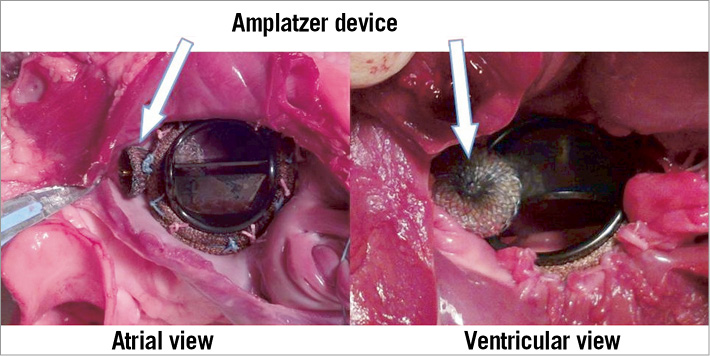Transcatheter closure of paravalvular or paraprosthetic leaks (PVL) is an alternative repair strategy to surgery in patients with isolated PVL, or at a very high risk of redo valve replacement.1 However, the occluder can lead to the dysfunction of valve leaflets of the mechanical valves. We studied the relationship of the anatomical location of PVL after mechanical mitral valve replacement on dysfunction of leaflets induced by the occluder after transcatheter closure. In a pig’s heart model, a St. Jude Medical® Masters bileaflet mitral valve (St. Jude Medical [SJM], St. Paul, MN, USA) was implanted using exactly the same technique as employed in humans. A gap was created and an Amplatzer occlusion device was surgically positioned to close the paravalvular gap. The mobility of the leaflets was examined according to different orientations of the mechanical prosthesis. The region of the pivots is elevated in the SJM prosthesis, which seems to confer protection by distancing the leaflets from the device which led to minimal interference (Figure 1) as compared to complete obstruction of the leaflet when the device was located at 90° from the site of pivots (Figure 2).

Figure 1. Amplatzer device is placed at the zone of the pivots of the mechanical valve. Minimal interference is observed.

Figure 2. Amplatzer device is placed at 90° from the zone of the pivots. Complete obstruction of the juxtapositional leaflet is observed by the occluder device.
Conflict of interest statement
The authors have no conflicts of interest to declare.

